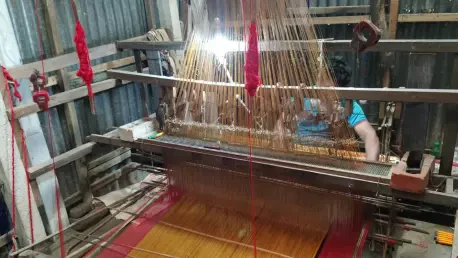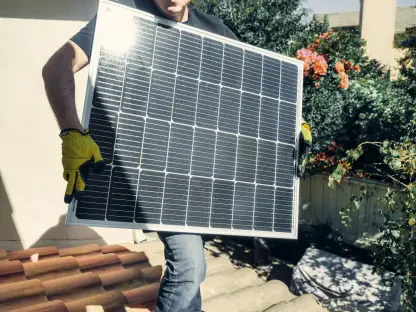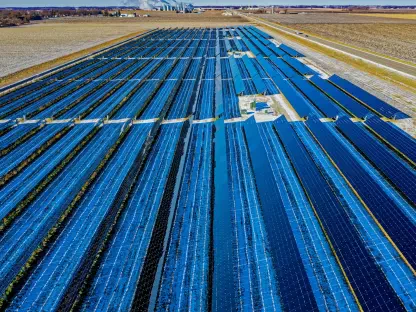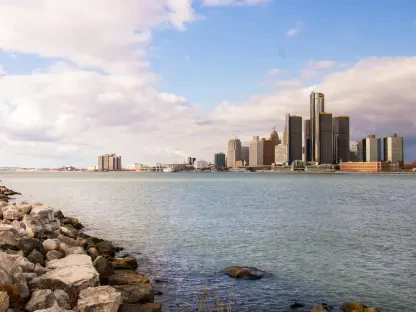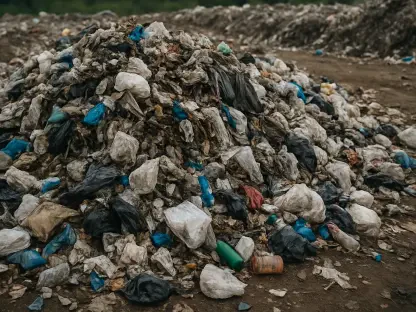Christopher Hailstone, with his extensive background in energy management, renewable energy, and electricity delivery, stands out as a leading expert on grid reliability and security. In this interview, we delve into the critical subject of carbon footprint reduction in Bangladesh’s RMG (ready-made garment) sector, exploring the environmental and economic implications, strategies for mitigation, and the roles of various stakeholders.
Can you explain what a carbon footprint is and why it is important for the RMG sector in Bangladesh?
A carbon footprint measures the total greenhouse gas emissions produced by various activities, culminating in CO2 equivalents. For Bangladesh’s RMG sector, keeping track of this is vital due to the industry’s significant energy consumption and its dependence on fossil fuel-powered electricity. Understanding and managing these emissions is crucial not only for environmental sustainability but also to meet the growing demands of international buyers who are increasingly scrutinizing carbon performance.
What are the main sources of carbon emissions in Bangladesh’s RMG sector?
In Bangladesh’s RMG sector, carbon emissions primarily originate from textile production, dyeing, and finishing processes, which require substantial energy. Contributing to the problem are transportation logistics and electricity consumption from the national grid, which is heavily reliant on natural gas and diesel generators. Additionally, waste management practices and water usage contribute indirectly but significantly to the overall carbon footprint.
How does the reliance on fossil fuels impact the carbon footprint of Bangladesh’s garment industry?
The heavy reliance on fossil fuels in Bangladesh greatly amplifies the RMG sector’s carbon footprint. Most factories use electricity generated from fossil fuels, and the widespread use of diesel generators for backup power adds to the emissions. The consequent high levels of CO2 and other greenhouse gases necessitate urgent interventions to shift away from these energy sources.
Why is reducing the carbon footprint essential for Bangladesh’s RMG sector, both ethically and economically?
Reducing the carbon footprint is crucial not only to ethically address environmental concerns but also to sustain economic viability. Ethically, it aligns the sector with global sustainability goals, curbing climate change impacts. Economically, it positions Bangladesh as a responsible player in the global market, attracting buyers who prioritize sustainable practices, which in turn can lead to better trade terms and long-term business partnerships.
How are international buyers influencing the carbon reduction efforts in Bangladesh’s garment industry?
International buyers are playing a powerful role by integrating environmental metrics into their sourcing criteria. They are demanding compliance with specific carbon reduction targets and offering incentives such as technical support and preferential contracts to suppliers who meet these standards. This external pressure is motivating Bangladeshi factories to adopt greener practices to remain competitive.
Can you elaborate on the types of energy-efficient technologies being adopted by factories in Bangladesh?
Factories in Bangladesh are upgrading to energy-efficient machinery and implementing LED lighting. Some are conducting energy audits to identify inefficiencies and retrofitting older equipment. There is also a growing focus on smart HVAC systems and using variable frequency drives in machinery to optimize energy use. These technologies collectively help reduce overall consumption and improve the carbon footprint.
How are factories in Bangladesh utilizing renewable energy sources like solar power?
Solar power is increasingly being harnessed in Bangladesh’s RMG sector. Many factories are installing solar panels on rooftops, which are used to generate electricity for daily operations. Some also employ solar water heating systems. The adoption of these renewable sources is supported by policies like the Net Metering Policy, which allows factories to sell surplus energy back to the grid, further incentivizing the shift.
What is the Net Metering Policy, and how does it benefit RMG factories in Bangladesh?
The Net Metering Policy allows businesses to feed surplus electricity produced from renewable sources, like solar panels, back to the grid. This policy benefits RMG factories by not only reducing their electricity costs but also by earning credits for the excess energy generated. This makes investments in renewable energy more economically viable and accelerates the transition to greener operations.
What does LEED certification mean, and how significant is its adoption in Bangladesh’s garment industry?
LEED (Leadership in Energy and Environmental Design) certification recognizes buildings that meet high standards of environmental efficiency and resource use. In the context of Bangladesh’s RMG industry, achieving LEED certification signals a commitment to sustainability, reducing energy consumption, water use, and greenhouse gas emissions. This certification also enhances the international reputation of the factories and attracts eco-conscious buyers.
How are waste and water management practices helping to reduce emissions in the RMG sector?
Efficient waste and water management practices are critical in reducing emissions. Factories are implementing water recycling and zero liquid discharge systems, which not only conserve water but also minimize pollutants. Proper effluent treatment plants ensure that wastewater is treated adequately before being released. These processes significantly reduce the carbon footprint by lessening the environmental impact of factory operations.
What strategies are in place for optimizing supply chains to lower carbon emissions?
Optimizing supply chains involves several strategies such as local sourcing of materials to reduce transportation emissions, using digital documentation to minimize paper use, and improving logistics planning to avoid unnecessary travel and storage time for materials. These strategies help streamline operations, cut down transport-related emissions, and reduce overall carbon footprint.
How important are worker awareness programs in achieving sustainability goals?
Worker awareness programs are essential for achieving sustainability goals as they foster a culture of responsibility and engagement. Educating workers about energy conservation and eco-friendly practices ensures that sustainability measures are effectively implemented at the grassroots level. Engaged and informed employees are more likely to adopt and advocate for green practices, driving overall success.
What incentives and support are global brands offering to suppliers in Bangladesh to encourage carbon reduction?
Global brands offer various incentives to encourage carbon reduction, including technical support for adopting sustainable practices, financial incentives for meeting specific carbon reduction targets, and preferential sourcing terms. These incentives help suppliers offset the initial costs of implementing green technologies and provide motivation to align with global sustainability standards.
How is the government of Bangladesh supporting green industrial practices in the RMG sector?
The government of Bangladesh is actively supporting green industrial practices by offering policy guidelines, subsidies, and export incentives that align with carbon reduction goals. Collaboration with international organizations like the World Bank and the UNDP also provides financial and technical assistance for green factory upgrades, further propelling the sector towards sustainability.
Can you describe the role of institutions like the BGMEA in promoting environmental sustainability?
Institutions like the Bangladesh Garment Manufacturers and Exporters Association (BGMEA) play a pivotal role by promoting environmental sustainability through summits, awards, and training workshops. These initiatives encourage factories to adopt greener practices and recognize those that excel in this area. The BGMEA also works closely with the government and international bodies to set and enforce sustainability standards.
What financial and technical assistance programs are available for green factory upgrades in Bangladesh?
Several programs offer financial and technical assistance for green factory upgrades in Bangladesh. Organizations like the IFC, World Bank, and UNDP provide funds and expertise to help factories transition to more sustainable operations. These programs offer grants, low-interest loans, and technical support to facilitate the adoption of energy-efficient technologies and renewable energy systems.
Are there any specific success stories or case studies of factories in Bangladesh significantly reducing their carbon footprint?
Indeed, there are several success stories. For instance, factories adopting solar power and achieving LEED certification have seen substantial reductions in their carbon footprints. These factories often serve as case studies, showcasing the benefits of sustainable practices, including lower operating costs, improved compliance with international standards, and enhanced market competitiveness.
How does local sourcing of fabrics contribute to carbon footprint reduction?
Local sourcing of fabrics significantly reduces the carbon footprint by minimizing transportation-related emissions. When materials are sourced locally, there is less need for long-distance shipping, which cuts down on fuel consumption and associated greenhouse gas emissions. This practice also supports local economies and can improve supply chain resilience.
What are some challenges factories face in transitioning to more sustainable practices?
Factories face several challenges in this transition, including the initial high costs of adopting energy-efficient technologies and renewable energy. There are also operational disruptions and training requirements to ensure that new practices are properly implemented. Additionally, there can be resistance to change and a lack of technical expertise, which complicates the shift to greener methods.
How do you see the future of Bangladesh’s RMG sector in terms of environmental sustainability and global competitiveness?
The future of Bangladesh’s RMG sector looks promising in terms of environmental sustainability and global competitiveness. With continued investment in green technologies, support from international buyers and the government, and a growing commitment to reducing carbon footprints, Bangladesh can lead the way in sustainable garment manufacturing. This approach not only addresses environmental issues but also enhances the sector’s global standing and market appeal.
